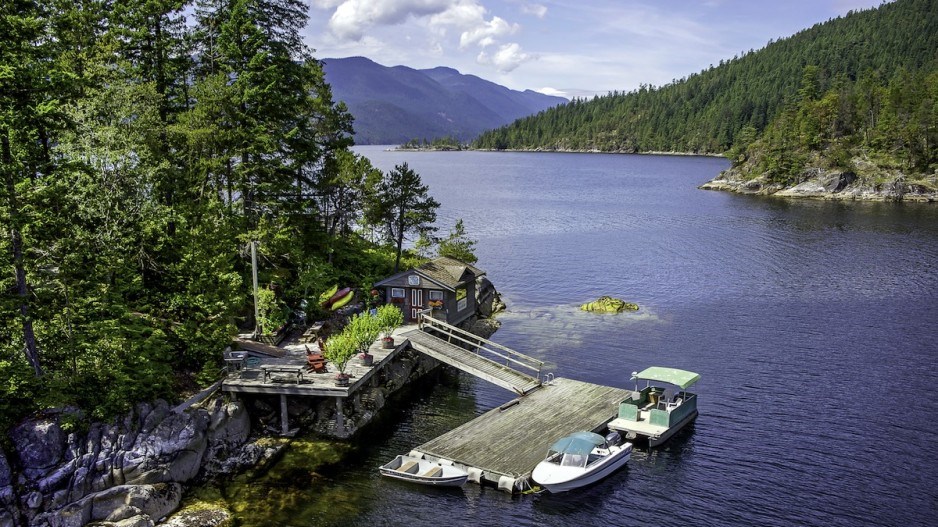More than 20 years after it was planned and a year since development was approved, the only waterfront hotel in the Sunshine Coast community of Gibsons is still in the ground.
More than two-dozen speakers in a crowd of 200 at the local Legion recently denounced plans for the development of part of Gospel Rock in Gibsons, a site that has been eyed for new homes for decades.
In Sechelt, local residents packed a May public hearing to oppose a six-storey condo project. Within weeks Sechelt council bowed to the pressure and ordered the developer back to the drawing board, although the applicant had already agreed to cut the building to five floors.
A report from Sechelt planning staff said that reducing the height would mean a loss of some of the affordable housing units that were negotiated for the original proposal. Frustrated Sechelt Mayor Bruce Milne had supported the project but in June conceded he didn’t see any likelihood that the rest of council would be swayed and that the public hearing sent a clear message.
“There is no question the community that’s living there doesn’t want that change, whether we think it’s good or not,” said Milne.
Meanwhile the Sunshine Coast, which stretches 84 kilometres along Howe Sound and the Georgia Strait north of West Vancouver, is facing a housing shortage, soaring home prices and a near-zero vacancy rate.
Sechelt ranks third highest in Canada for residents who spend more than 50 per cent of their gross income on rent, ahead of even West Vancouver (37 per cent), according to the 2018 Canadian Rental Housing Index, that was based on 2016 census data from 800 cities and towns across the country.
Twenty-nine per cent of renters in the Sunshine Coast Regional District and the District of Sechelt are spending more than half their income on rent and utilities. The rate in Gibsons is 25 per cent. The B.C. provincial average is 21 per cent and the national average is 18 per cent., the study found.
Jill Atkey, CEO of the B.C. Non-Profit Housing Association, called the rental situation on the Sunshine Coast “severe.”
Home prices on the Sunshine Coast, meanwhile, have increased 70.3 per cent in the past three years and were up 3.4 per cent as of June from three months earlier, compared to a 0.9 per cent price increase in Greater Vancouver in the same period, according to the Real Estate Board of Greater Vancouver.
The benchmark detached house price on the Sunshine Coast in June was $628,000, up 8 per cent since January.
It is not for lack of land. The Sunshine Coast covers 1,900 square kilometres – a footprint 16 times larger than the City of Vancouver – and has a population of about 28,000 people, creating one of the lowest population densities in southern B.C., at 1.4 persons per square kilometre.
There were 242 new home starts last year on the Sunshine Coast and 2018 is so far seeing building at a faster pace.
New homes
In Sechelt, the first phase of the Woodlands single-family subdivision is proceeding with eight building lots and plans for four additional phases. Vancouver-based Onni is also completing a townhouse development in Sechelt’s Porpoise Bay area.
So far this year, 51 new homes have received Sechelt permits.
In Gibsons, despite the protests, town council has green lighted the 360-home development by Greenlane Homes for the Gospel Rock site.
Gibsons council has issued six pages of guidelines for the development that include using “West Coast design elements,” using local materials as much as possible, installing underground parking and including electric vehicle charging stations and public art.
Gibsons has also approved the Eagleview project that TCD Developments, plans to build in three phases with a total of 87 residential units. TCD offered the town a $270,000 contribution its affordable housing fund and $150,000 towards local beach improvements to secure permits.
The largest project, the George Hotel and Residences, is barely starting despite receiving Gibsons development approval in 2017.
The waterfront complex would feature two mid-rise towers with a 116-room hotel, a 21,000-square-foot spa, a chapel, a 14,000-square-foot conference centre and 40 condominiums.
The project recently battled off a BC Supreme Court suit from the Gibsons Alliance of Business and Community Society, but rancour remains.
One Gibsons resident, when told by the Coast Reporter newspaper that it looked like nothing could stop the George – or at least nothing short of a full-blown meltdown of the global economy, the woman seethed “I hope there’s a full-blown meltdown of the global economy.”
Gibsons officials expect it will take months for site cleanup and another two months for foundation improvements before actual construction of the George begins. Construction is expected to take 24 to 30 months – barring, of course, a full-blown meltdown of the global economy.
– With files from Coast Reporter



